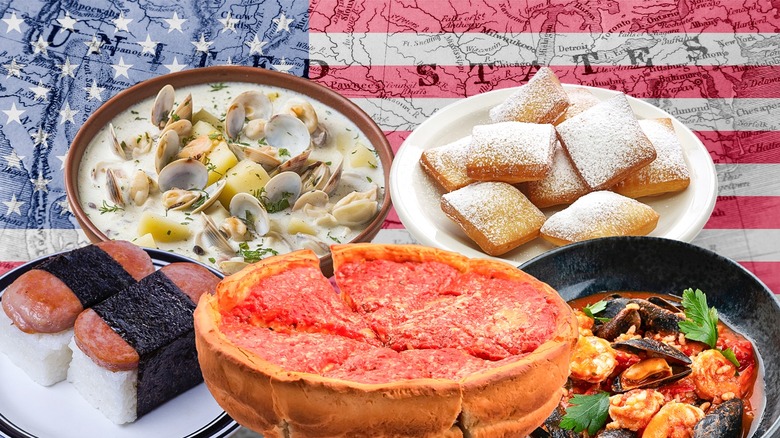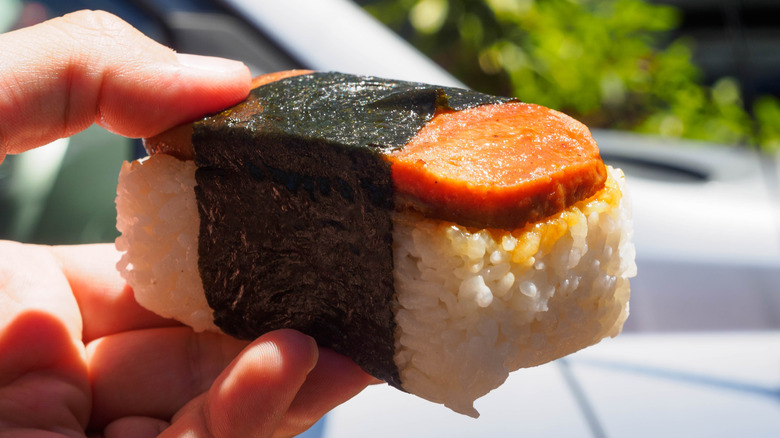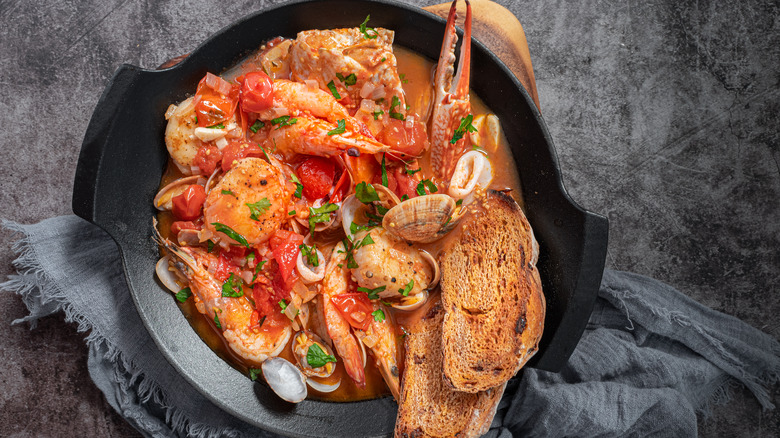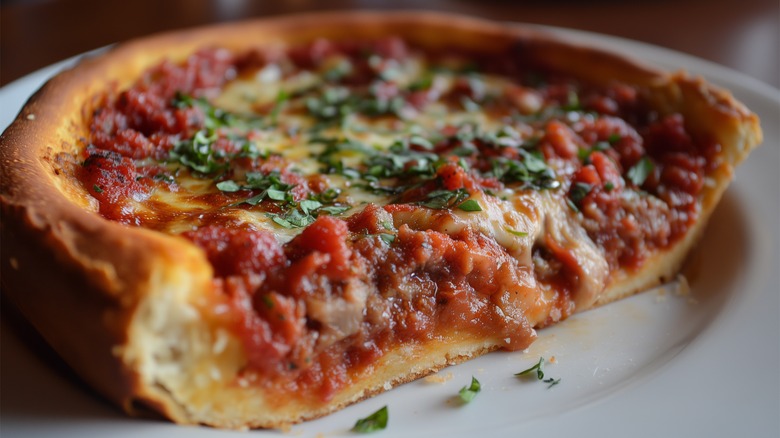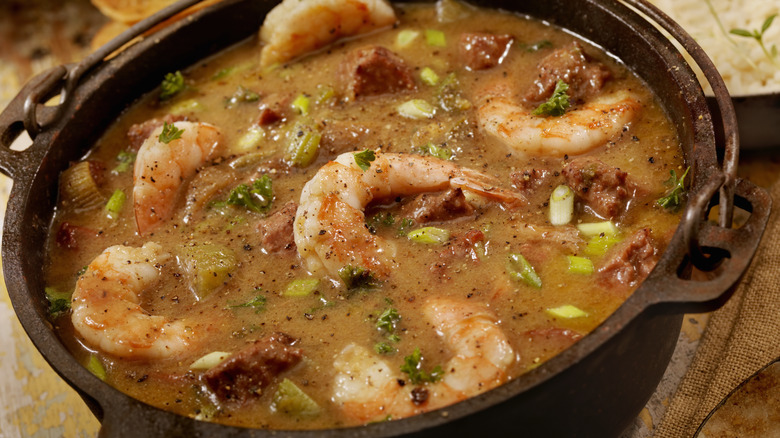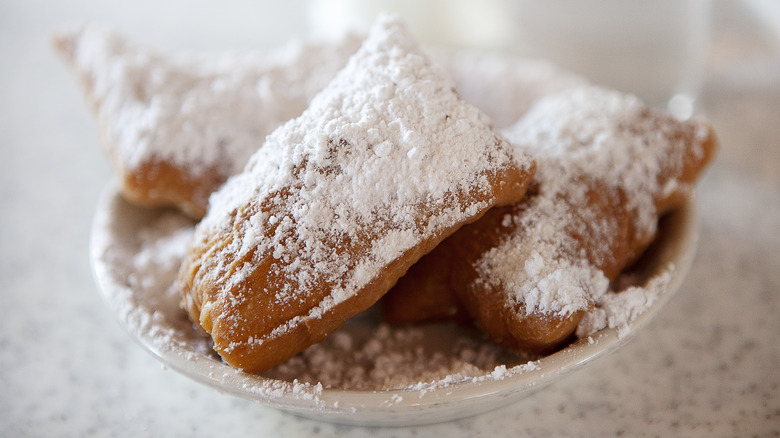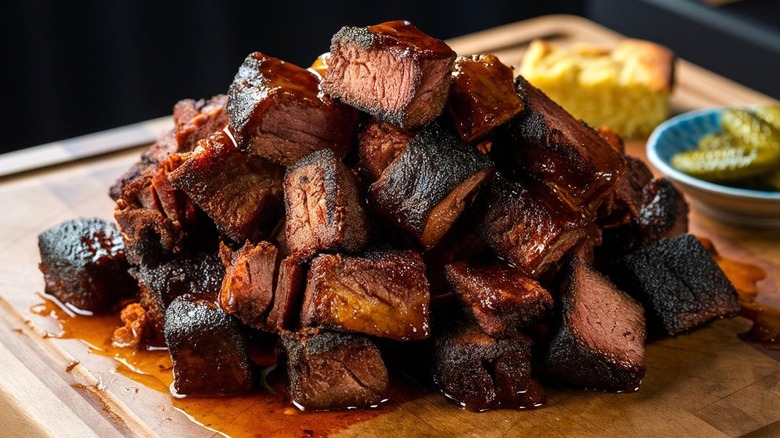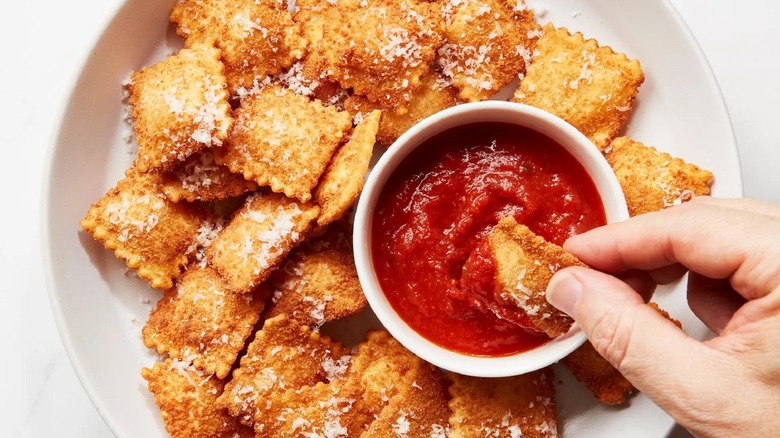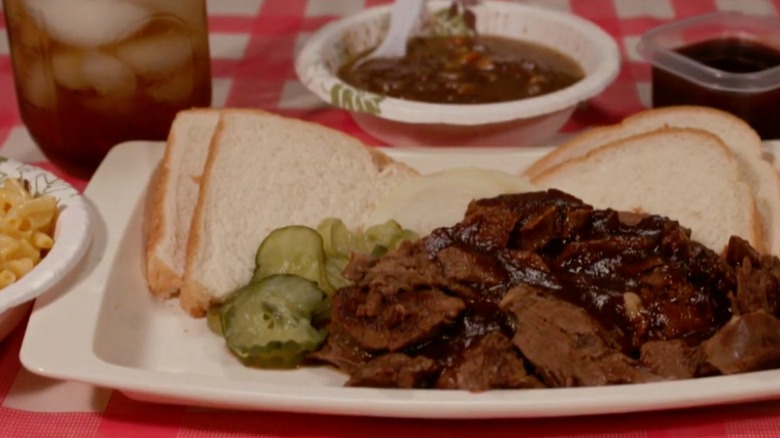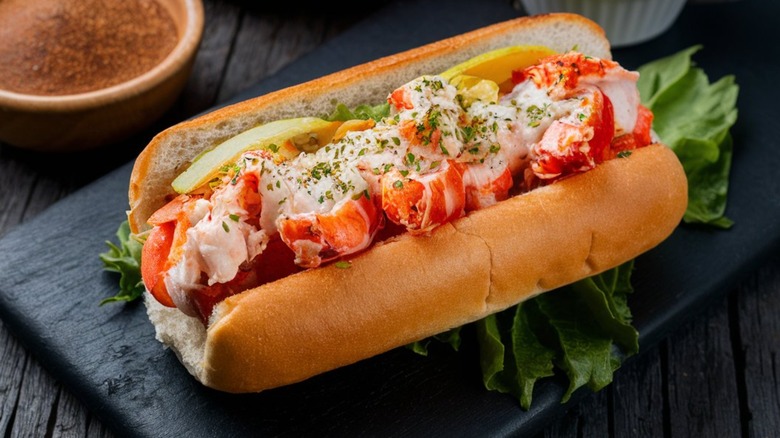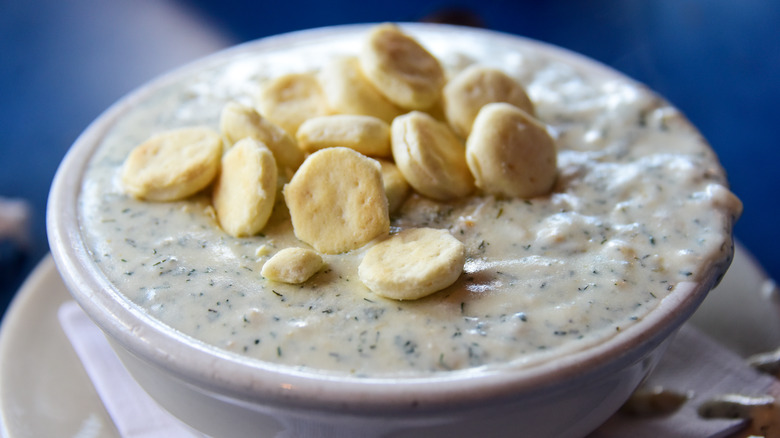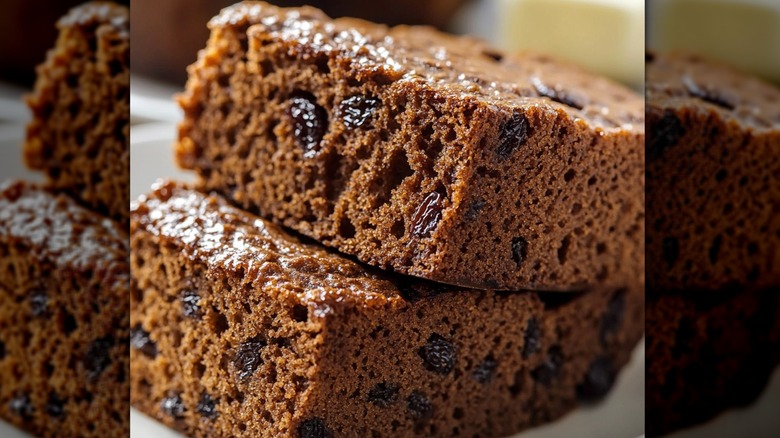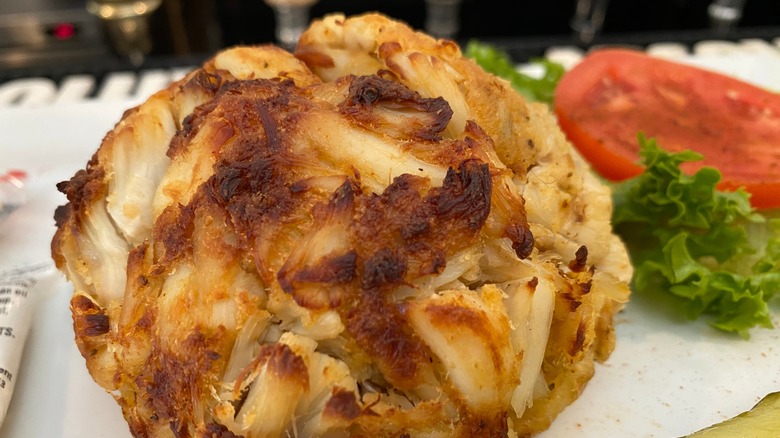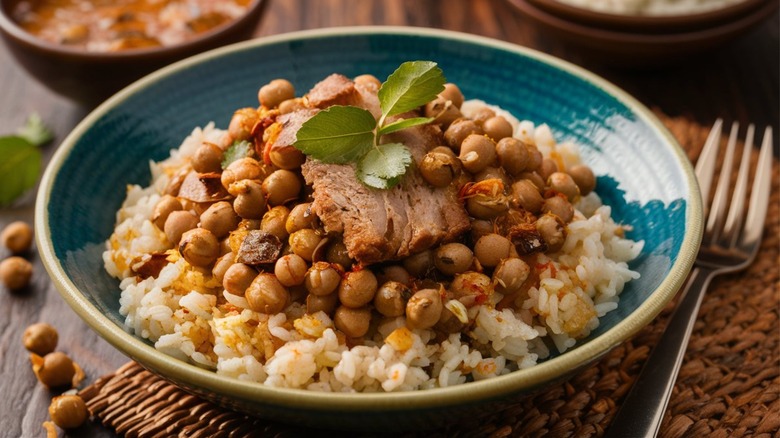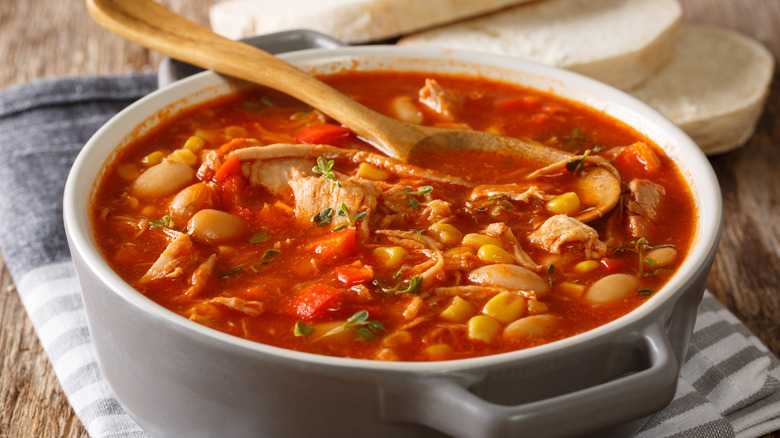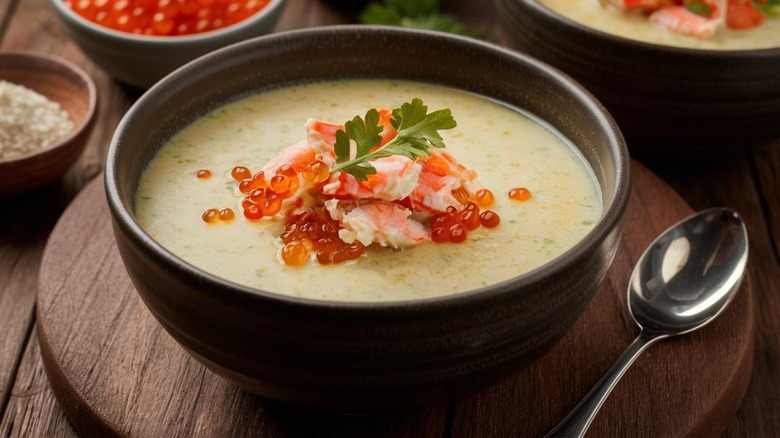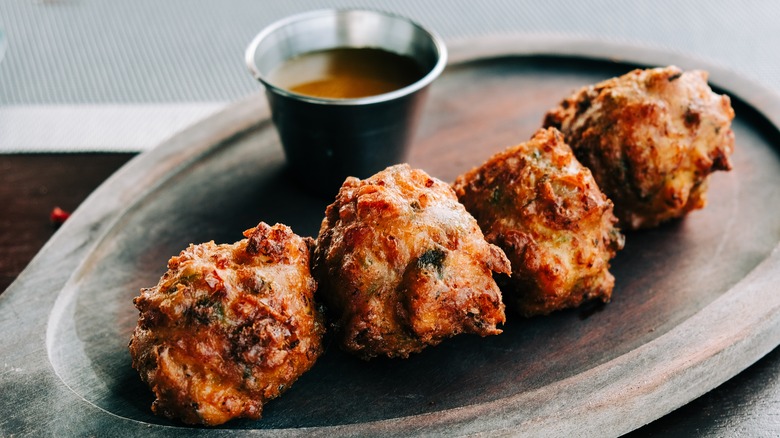19 Regional Foods Across The US You Should Try At Least Once
We may receive a commission on purchases made from links.
If you plan to travel domestically soon, basing your itinerary around food isn't a bad idea. There are so many regional recipes to experience. In fact, you may need to travel to get your hands on some of them, but we promise that your taste buds will thank you. And if you happen to see one of these dishes on the menu or at a market while you are away from home, don't hesitate to try them to get an authentic adventure, starting with your plate.
Some regional cuisines use spices or ingredients native to their areas while others highlight cooking styles that are rich in culinary history and tradition. No matter how the dishes made their way to their well-known locales, you can be sure that they've stood the test of time and the discerning tastebuds of many locals and travelers alike. If you have a chance to check out some of these regional specialty foods, you should!
Spam musubi
Popular in Hawaii, Spam musubi is a salty snack that is available everywhere from the grocery store to the gas station in the Aloha State. It combines rice, spam, seaweed, and furikake seasoning to create a dish that is truly ono, which means "good to eat" in Hawaiian.
Spam musubi was inspired by Japanese onigiri, rice balls wrapped in nori, or seaweed. The rice acts as a nice base while the nori gives the entire bite-sized snack a boost of umami. But while onigiri is traditionally triangle-shaped, Spam musubi is made in a rectangle, mimicking the shape of a container of Spam. Because Spam is a popular ingredient in Hawaii, it was added to the combo to give it a truly unique aloha spin, but you can also try teriyaki versions, musubi with egg, and chicken musubi. The ingredients are easy to find, so you can recreate Spam musubi at home but make sure to get a musubi mold kit to get its iconic shape.
Akutuq
Also known as Eskimo ice cream after the native tribes that made this frozen treat, akutuq ("to stir" in the Yup'ik language) combines hard animal fat and ice or snow. Seal oil is also a key ingredient to get the right consistency — frothy, thanks to the vigorous hand-whipping motion used to make it — and flavor. These ingredients are found in remote regions of Alaska, so it's not surprising that this treat was created using them; people who lived in this region relied on whatever was available to them. Berries are a common addition to give the akutuq sweetness as well as color.
While traditional versions of akutuq include ingredients available in the wilderness, modern chefs sometimes substitute shortening or table sugar. If you have a chance to try akutuq, you'll be rewarded with a delicious dessert that hails from centuries of tradition.
Cioppino
This fish stew began in San Francisco as a way to use up the day's catch and whatever else was on hand. It was likely dreamed up by Italian immigrants, who based it on a similar soup popular in the Liguria region of Italy. Fishermen would combine part of their day's catch into a large pot to be shared, making sure those who didn't have any luck that day still had something to eat. The result was a dish featuring a tomato-based broth and a wide range of ingredients that changed each time it was made.
Today, cioppino is served throughout the country but is most popular in the Bay Area where it originated. The traditional version is made with whitefish, clams, shrimp, and mussels. The tomato broth is key and flavored with plenty of garlic and lemon. Some versions include noodles but most come with thick slices of crusty bread, perfect for soaking up every delicious bite.
Prickly pear syrup
Desert regions, such as Arizona and parts of Texas, may not have a lot of vegetation but chefs take full advantage of the native prickly pear cactus, which is plentiful. Syrup is made with the fruit of the cactus, which is easy to spot thanks to its bright pink color. There is quite a bit of straining involved to get rid of all of the seeds, but you can find the syrup on many local menus and in specialty shops throughout the southwest and even in parts of California.
When made as a simple syrup, the prickly pear fruit gives an extra burst of sweet flavor and a vibrant pink color to dishes. Prickly pear also makes a delicious jam. Consider taking a bottle of this regional treat home with you after your travels to enjoy its taste no matter where you call home.
Deep-dish pizza
Chicago is synonymous with deep-dish pizza, a staple you should check out the next time you visit the Windy City. This style includes a ton of cheese, sauce, and toppings, and is made in a cake pan, which allows the crust to be extra deep and flaky. The crust is key when it comes to the perfect deep-dish pizza; it is layered with butter to form a thick layer on the bottom as well as the sides.
You can go on eating tours of the best and most historic pizzerias in Chicago, as well as try other favorites in the city like Chicago-style hot dogs and Italian beef sandwiches. All make delicious additions to your day but the deep-dish pizza is one of the most iconic dishes from the city.
Gumbo
With a savory broth, delicious seafood, and a kick of spice from cajun seasoning, gumbo originated in New Orleans. It starts with a roux, made by combining flour and butter over heat, as the base of the thick stew. Sausage and shrimp are two popular additions but vegetables like peppers, celery, and onion also impart a lot of flavor to authentic gumbo. There are almost as many versions of the stew as there are chefs in New Orleans, many of which perfected family recipes over generations. Gumbo is typically served over rice for a rich, hearty meal.
The stew may have got its start in New Orleans, but it soon expanded throughout the state of Louisiana. Based on the ingredients used to flavor it, gumbo can be categorized as creole or cajun. For example, adding seafood is more common in coastal parts of Louisiana, which would make the dish lean more creole, while inland gumbos rely heavily on sausage and chicken, leaning more toward the cajun side.
Beignets
Crispy, sweet beignets also hail from New Orleans. These small fried desserts are similar to fritters or donuts. They are light, not overly sweet, and come sprinkled with a dusting of powdered sugar. Creative varieties add fruit or chocolate filling and can be a bit larger. They are typically seen on menus in orders of three, perfect for enjoying during breakfast or as a dessert. In NOLA, beignets are often served with coffee mixed with chicory at cafes in the city.
Beignets are such staples that the city hosts a celebration called BeignetFest each year. Vendors arrive with everything from traditional crispy beignets to crabmeat beignets and ice cream-stuffed beignets. Want to enjoy a taste of the Big Easy at home? You can order beignet mix from the famous Cafe Du Monde.
Beef burnt ends
Kansas City is known for its barbecue and one of the best ways to try it is with a plate of crispy, tender burnt ends. Made from the point of smoked brisket, the dish includes the ends doused in savory-sweet KC barbecue sauce. They are known for being full of flavor, thanks to the charring on the outside of the meat as well as the caramelized sauce. Beef burnt ends can take a while to prepare but you'll be glad that you waited to get a bite of the perfectly tender and tasty dish.
Burnt ends were first popularized by Arthur Bryant's restaurant in Kansas City, where they are still on the menu. Once you fall in love with burnt ends, you can order them from Kansas City restaurants and suppliers, who will smoke and prepare the meat to perfection before shipping it out around the U.S.
Toasted ravioli
You can find savory toasted ravioli on menus around St. Louis. They first appeared in the historically Italian-American neighborhood, The Hill, and local restaurants still debate over who can lay claim to the dish's creation. Stuffed with cheese, meat, vegetables, and other unique combinations, T-ravs, as they are known locally, are then tossed into hot frying oil before getting a generous sprinkling of parmesan cheese.
Toasted ravioli makes a great appetizer to share or bring to a get-together, but be sure to ask for dipping sauce. Some versions use more meat in the filling while others pack them full of melted cheese or tender vegetables. Today, you can find them all around the city, not just in The Hill, although some of the longest-standing and most closely guarded secret recipes are still served in the same eateries that perfected the dish.
Barbecued mutton
Another popular barbecue dish comes from Western Kentucky, where sheep are plentiful thanks to the rise of the wool industry during the 1800s. Farmers raised sheep through a mature age since this allowed them to get wool for many years. As mutton meat matured though, it became tough, so barbecue techniques were used on it. The result quickly found a loyal fanbase among locals. Many establishments claim to have the best barbecue mutton in the area, which they call a Kentucky tradition.
It's typically served on its own or as a sandwich on sliced bread, with extra barbecue on the side for dipping. It's hard to find mutton outside of a small region in Western Kentucky, so you might have to travel to get it, even if you're a resident of the Bluegrass State. Fortunately, many restaurants ship mutton, sauce, or both.
Lobster rolls
These seafood sandwiches have gotten such a following that you can find them in pop-up restaurants and on menus all around the U.S. But the original, and arguably the best and most authentic versions, are still made in New England. Lobster rolls are a more recent addition to regional cuisine, tracing their origin to shops in Maine and Connecticut in the 1920s. Connecticut-style lobster rolls have a generous amount of butter over large pieces of lobster. Maine-style sandwiches have mayo mixed in to create a type of lobster salad. Both are served on toasted open-top buns with a squirt of lemon juice, two key ingredients in great lobster rolls.
For the best taste and texture, these sandwiches require the best lobster, which is why Maine and the surrounding areas have the corner on this market. Even restaurants that serve lobster rolls in other areas source their shellfish from Maine.
Clam chowder
You can find this hearty stew in cans in supermarkets all over the country but the best versions of clam chowder come from three different regions. New England clam chowder, the one most synonymous with the dish, has a rich, white broth with plenty of clams. It tastes the richest thanks to the addition of butter and cream. Manhattan clam chowder uses tomatoes in the broth instead of cream, along with spices and plenty of vegetables. Rhode Island clam chowder has a clear broth, which highlights the brininess of the clams.
Oyster crackers are often served with clam chowder to add a touch of crispiness to the top. If you're around New England, expect to see at least one variety on most menus, although you can find New England-style clam chowder in many regions. The best version still hails from that area though, thanks to the native fresh clams.
Boston brown bread
A visit to historic Boston should include some of the city's most delicious dishes, including Boston canned brown bread. With a touch of sweetness, it has a long history in the Boston area, where the bread was made in the 1800s. It gets flavor and a rich brown hue from its key ingredient: molasses.
Rather than being baked, the bread is steamed in a can, which along with the addition of buttermilk, helps it stay extra moist. You can also use a multi-use steamer lined with aluminum foil, although the most authentic preparation calls for a can. Some recipes, including some commercially prepared versions, include raisins for an even sweeter flavor and added texture. Boston brown bread is often served with baked beans, another staple dish associated with Beantown.
Lemon stick
If you've ever been to the annual FlowerMart in the Mt. Vernon neighborhood of Baltimore, you may have seen tables upon tables of lemon halves with peppermints sticking out. This is a super simple treat but one that has a loyal following in this Maryland city. The peppermint stick acts as a straw for the lemon juice, providing a minty-sweet combo that is truly unique. It dates back as early as the 1911 FlowerMart when festival goers wanted a cool treat in the hot weather. Other stories give its origin as France or New Orleans, but today it is clearly associated with Charm City.
You can replicate lemon sticks just about anywhere by popping a soft peppermint stick into a lemon half. You'll get an unexpected flavor combination that just works. But for the true experience, head to Baltimore to enjoy the rest of the ambiance of the FlowerMart.
Crab cakes
Crab cakes are something that Maryland does better than anywhere else. Maryland crab cakes are made with jumbo lump crab meat and only enough extra ingredients to keep the cake together. In fact, most restaurants claiming the best crab cakes point out that they are all crab and no filler. You can get them fried but a true Marylander will always tell you to opt for broiled. It's savory and sweet, while still maintaining a crisp exterior. A sprinkling of Old Bay over your crab cakes completes the dish.
You can find crab cakes all year but during the late summer and early fall, blue crabs from the Chesapeake Bay are the juiciest and sweetest. If you are making the dish at home and want to get more adventurous, order crabs still in the shell and pick them apart. You'll get to enjoy some of the freshest and most succulent bites of crab out there.
Hoppin' John
Hoppin' John, or black-eyed peas with ham and rice is popular in the South, where it has been served for generations as a New Year's meal. While you can make Hoppin' John with dried peas or even another kind of bean, the addition of black-eyed peas is supposed to bring good luck for the year to come.
Hoppin' John is traditionally served over a generous bed of rice, which separates it from other delicious pea or ham stews. It is salty thanks to the addition of the ham, and becomes even more so if you cook the peas along with a ham bone. Fortunately, ham is a traditional Christmas dish so you might just have some leftovers to throw into the pot, making this an economical dish as well as a delicious one.
Brunswick stew
It's unclear if this tomato-based stew originated in Brunswick County, Virginia, or Brunswick, Georgia. But no matter where it traces its origins, Brunswick stew is worth trying anytime you see it on the menu. Today, it's made throughout the South with different regions putting their own spin on the original recipes.
In the first versions of the dish, small game, such as squirrels or rabbits, were common but modern recipes use chicken, pork, or beef. Corn, potatoes, and lima beans are all essentials, which add flavor and texture. The stew has a hint of sweetness thanks to the corn, but some recipes add sugar to boost it even more. This pairs well with salty ham, which is sometimes added. It is all simmered in a tasty tomato-based broth. Barbecue sauce, another staple of Southern cuisine, also makes an appearance in many versions. The result is a hearty stew that is the perfect comfort food.
She-crab soup
Made with rich cream and topped with sherry, this bisque-style soup is popular in South Carolina, although you can find it in many Southern coastal cities. It uses heavy cream to create a base that is flavored with crab. While the crab meat used can come from male or female crustaceans, the soup gets its name — She-crab — because it includes crab eggs, or roe, sprinkled on top. The crab meat has a mild sweet flavor while the roe adds saltiness, and both pair wonderfully with the rich cream.
She-crab soup is known for its rich flavor and orange hue, which is also thanks to the addition of roe to the ingredient list. While a version of crab bisque was served in the region as early as the 1700s, the She-crab soup that we know today was created in the 1900s. It is a must-try if you're in South Carolina.
Conch fritters
Conch are large sea snails native to the Florida Keys, the Bahamas, and surrounding regions. While sea snails might not sound appetizing, you can trust that when they're battered and fried, they become a deliciously salty and savory snack. Conch fritters combine conch with a few chopped veggies and seasoned batter, which is then shaped into small balls and fried. The best versions use fresh-caught conch, which you might even be able to see brought in earlier that day. If you're in the Keys, look for seafood markets or restaurants that have close ties since they often have the freshest conch and the best know-how to make top-notch fritters.
You can get conch on its own, fried with chips, or in a seafood salad. But the fritters are perfect for sharing and one of the best ways to enjoy this delicious sea snail when you're visiting the Florida Keys.
